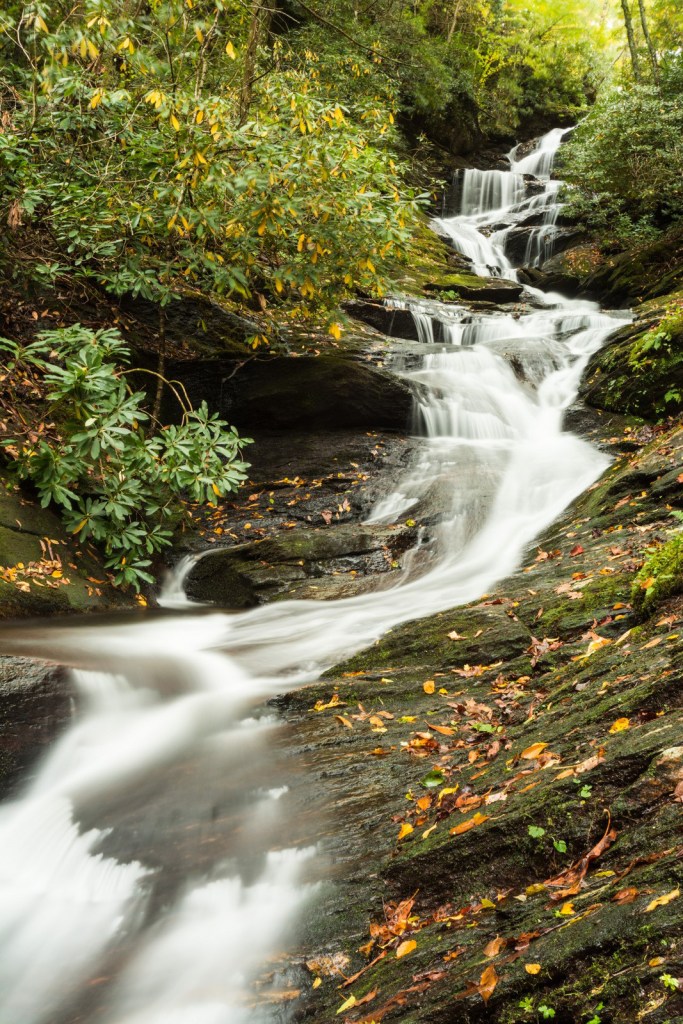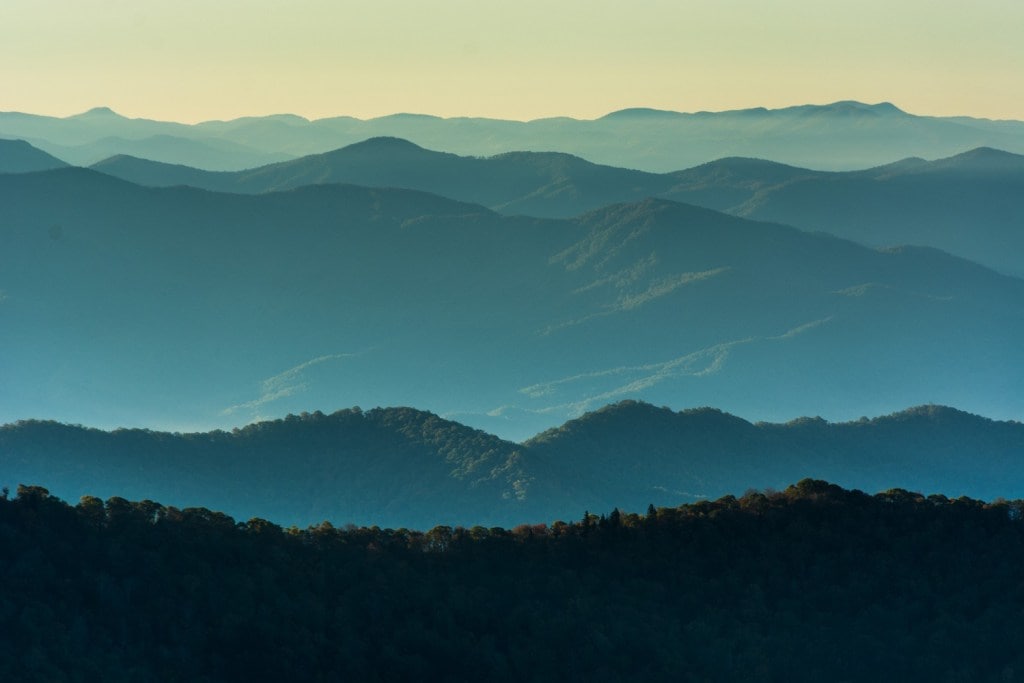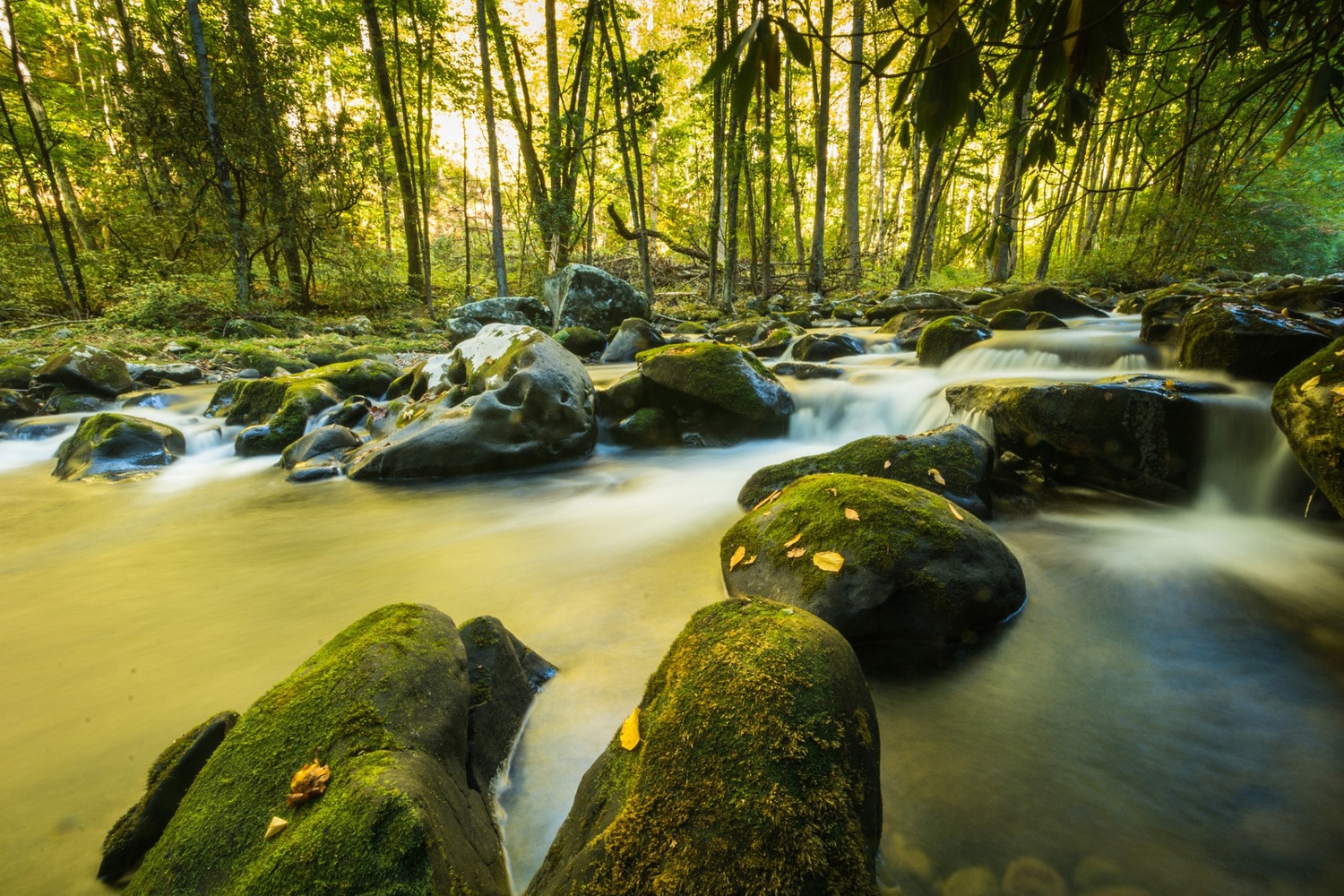On a cool, dusky evening in October, deep in the root cellar of a thickly forested, tightly hemmed-in Southern Appalachian valley—a place where you could forget the sun exists, because so little direct sunlight reaches this rumpled, mossy ground at this time of year—I start walking up a trail immediately distinctive for its absence of people.

Roaring Fork Falls, Pisgah National Forest, North Carolina.
I’ve hiked about 17 cumulative miles since early this morning, ticking off a greatest-hits list of breathtaking views in western North Carolina’s Pisgah National Forest: the tops of Looking Glass Rock and John Rock; a pair of 6,000-foot “balds” on the Art Loeb Trail, Black Balsam Knob and Tennent Mountain; and an overlook called Devil’s Courthouse along the Blue Ridge Parkway.
The fall foliage creeping toward peak colors, combined with clear skies and just-about-perfect temperatures, draws in hikers like paper clips to a magnet: I’ve seen no shortage of people on those other hikes. So the contrary solitude on this winding path—the one last hike I’ll knock off today—may explain my sudden, overwhelming sense of peacefulness. Or maybe it’s just the brain’s natural chemical reaction to the embracing quiet of these lush woods.
Twenty short minutes from my car, I reach the trail’s end. Perhaps because I hadn’t seen online photos of this place before coming here, I encounter a sight I did not expect (surprises are still possible in nature): a 50-foot-tall, silvery veil of water pouring over the lip of a deeply cut rock alcove known as Moore Cove.
Still alone, I walk behind the curtain of water and around again to the front of it. No, it’s not the thunderous liquid pillars of 1,400-foot Upper Yosemite Falls or 308-foot Lower Yellowstone Falls. Those waterfalls and other grand vistas of the West have taken my breath away many times. These smaller-scale Appalachian Mountains have some sweeping vistas, too. But the grandeur here gets served in smaller, intimate portions. This is scenery that you can step into, waterfalls whose spray dampens your face, streams where you can numb your tired feet.

A view from the Appalachian Trail.
Over the course of six days hiking in North Carolina, I day-hiked to numerous summits and backpacked 34 miles through Great Smoky Mountains National Park, including a stretch of the Appalachian Trail and 6,643-foot Clingmans Dome, where the observation tower affords a 360-degree panorama of an ocean of blue ridges. I enjoyed my share of far-horizon views that week—and they were inspirational.
But I soon discovered that these ancient hills conceal their most mysterious and magical prizes below the forest canopy. You can hardly swing a trekking pole without splashing it through one of the hundreds of waterfalls carving sinuous lines down western North Carolina’s steep mountainsides. Wear a blindfold and randomly stop on a streamside trail, and odds are you’ll be standing beside a lovely cascade pouring into a pool reflecting sunlit treetops and an understory crowded with more hues of green than you knew existed.
So, here’s my advice: Sure, hike some high trails in the Southern Appalachians. (My strong recommendation, if you delight in a scenic butt-kicker, is the 12-mile-long Black Mountain Crest Trail traversing 6,000-foot peaks and ending at the highest summit east of the Mississippi: 6,684-foot Mount Mitchell.)
But focus your time on streamside trails. Seek out the waterfalls. That’s where you’ll discover the quiet beauty of this part of the country.
It just might also bring you a little peace of mind.
Get maps, descriptions, and photos for more parks completely free and viewable offline by downloading REI’s National Parks Guide and Maps on iOS or Android.
